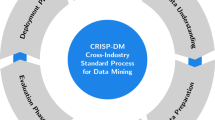Abstract
Python became the preferred language for teaching in academia, and it is one of the most popular programming languages for scientific computing. This wide popularity occurs despite the weak performance of the language. This weakness is the motivation that drives the efforts devoted by the Python community to improve the performance of the language. In this article, we are following these efforts while we focus on one specific promised solution that aims to provide high-performance and performance portability for Python applications.
Similar content being viewed by others
References
Guo P (2014) Python is now the most popular introductory teaching language at top U.S. universities, July 7, 2014. http://cacm.acm.org/blogs/blog-cacm/176450-python-is-now-the-most-popular-introductory-teaching-language-at-top-us-universities/fulltext
Most Popular Coding Languages of 2016, February 2, 2016. http://blog.codeeval.com/
TIOBE Index. http://www.tiobe.com/tiobe-index/
IEEE Spectrum ranking. http://spectrum.ieee.org/computing/software/the-2016-top-programming-languages
Scipy. http://www.scipy.org/
Numpy. http://www.numpy.org/
Matplotlib. http://matplotlib.org/
Marowka A Is python suitable for teaching parallel programming?. will be published
PyPy. http://pypy.org/
Numba. http://numba.pydata.org/
A speed comparisonof C, Julia, Python, Numba and Cython on LU Factorization. https://www.ibm.com/developerworks/community/blogs/jfp/entry_Comparison_Of_C_Julia_Python_Numba_Cython_Scipy_and_BLAS_on_LU_Factorization?lang=en
PyPy Speed Center. http://speed.pypy.org/
Cython. http://cython.org/
Numexpr. https://github.com/pydata/numexpr
Python multiprocessing module. https://docs.python.org/2/library/multiprocessing.html
Anaconda accelerate. https://docs.continuum.io/accelerate/
Anaconda python. https://www.continuum.io/downloads
Python threading module. https://docs.python.org/3.3/library/threading.html
Volkov V, Demmel J (2008) Benchmarking GPUs to tune dense linear algebra. In: Proc. (2008) ACM/IEEE Conf. on Supercomputing (SC’08), Piscataway, NJ: IEEE Press, 2008. Art. 31, pp 1–11
LLVM compiler project. https://en.wikipedia.org/wiki/LLVM
Author information
Authors and Affiliations
Corresponding author
Rights and permissions
About this article
Cite this article
Marowka, A. Python accelerators for high-performance computing. J Supercomput 74, 1449–1460 (2018). https://doi.org/10.1007/s11227-017-2213-5
Published:
Issue Date:
DOI: https://doi.org/10.1007/s11227-017-2213-5




